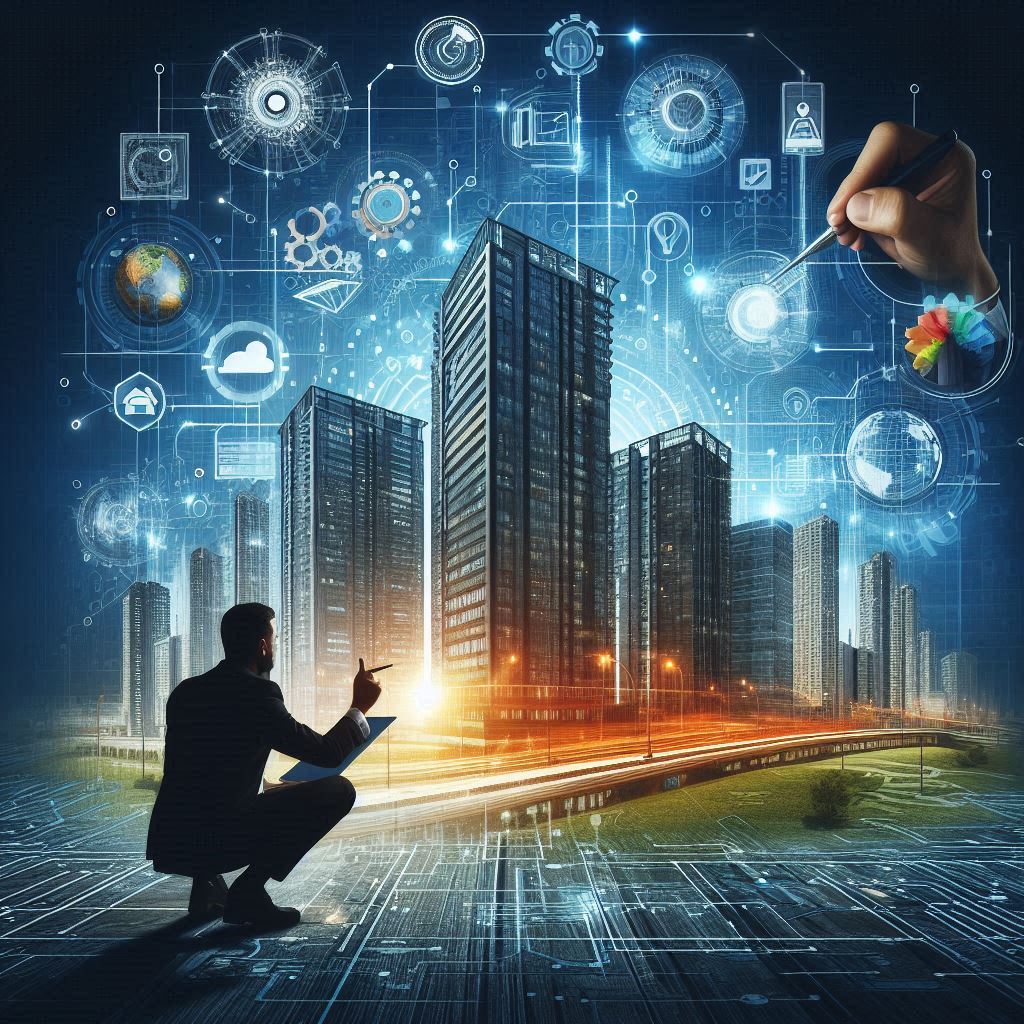
Boosting Productivity and Efficiency with Intelligent Workplace
In today’s fast-evolving business landscape, organizations must rethink how they manage workspaces to maximize employee potential. Intelligent workplace management is the integration of advanced technologies and data-driven strategies to create environments that foster productivity, innovation, and satisfaction. This blog explores how intelligent workplaces empower employees, the challenges of outdated environments, and the tools enterprises can leverage to transform their workspaces.
Listen our podcast about Intelligent Workplace management
How Intelligent Workplaces Increase Employee Potential
Intelligent workplaces are designed to optimize workflows, enhance collaboration, and improve employee experiences. Here’s how they unlock potential:
- Automation of Routine Tasks: By automating repetitive tasks, employees can focus on high-value activities like strategic planning or creative problem-solving. This reduces burnout and boosts efficiency.
- Enhanced Collaboration: Intelligent workplaces use real-time communication tools like video conferencing and collaborative platforms to break down silos and promote teamwork.
- Personalized Experiences: Technologies such as IoT sensors can adapt office layouts based on individual preferences, ensuring comfort and productivity.
- Data-Driven Insights: Analytics tools provide actionable insights into employee performance and workspace utilization, enabling informed decision-making.
Is Your Workplace Helping or Holding Back Employees?
A poorly designed or outdated workplace can stifle employee growth. Research shows that:
- Outdated Technology Hampers Productivity: Nearly half of surveyed employees feel hindered by employers who fail to adopt modern tools like automation and workplace experience platforms.
- Design Matters: Poorly designed office spaces can erode productivity by up to 19%, while environments incorporating natural elements like greenery boost productivity by 15%.
- Negative Impact on Remote Work: Inadequate remote setups reduce efficiency for 28% of employees, highlighting the need for intelligent solutions in hybrid models[6].
What If the Workplace Itself Is the Problem?
An inefficient workplace environment could be the hidden roadblock preventing your team from reaching its full potential. Key issues include:
- Lack of Flexibility: Rigid office designs fail to accommodate diverse work styles such as remote or hybrid arrangements.
- Employee Dissatisfaction: Outdated tools frustrate employees, reducing engagement and overall performance.
- Missed Opportunities for Innovation: Without access to cutting-edge technologies, teams struggle to innovate effectively.
To address these challenges, organizations must adopt intelligent workplace solutions that prioritize adaptability, efficiency, and employee satisfaction.
How Intelligent Workplace Management Changes the Game
Intelligent workplace management transforms traditional environments into dynamic ecosystems that support both organizational goals and employee well-being. Benefits include:
- Improved Productivity: Automation frees up time for strategic tasks, while ergonomic designs enhance focus and comfort.
- Enhanced Employee Engagement: Interactive digital tools create a sense of connection among employees, fostering motivation and loyalty.
- Accelerated Innovation: A culture of experimentation thrives in smart workplaces equipped with advanced technologies.
- Flexible Work Models: Support for hybrid setups attracts top talent by offering work-life balance without compromising productivity.
AI Tools for Intelligent Workplace Management
Enterprises can leverage various AI-powered tools to create intelligent workplaces:
- Collaboration Platforms:
- Tools like Slack or Microsoft Teams enable seamless communication among remote and on-site teams.
- Process Automation Software:
- Robotic Process Automation (RPA) tools like UiPath streamline repetitive workflows.
- Workplace Analytics Tools:
- Platforms such as Tableau or Power BI provide insights into workspace utilization and employee performance.
- IoT Sensors:
- Smart devices monitor air quality, occupancy levels, and temperature to optimize physical environments.
- Virtual Reality (VR) Training Solutions:
- VR platforms like Strivr offer immersive training experiences for skill development.
- Smart Scheduling Systems:
- Tools like Yarooms automate meeting room bookings and desk allocations based on real-time data.
Our Conclusion
Intelligent workplace management is not just a trend, it’s a necessity for organizations aiming to thrive in the modern era. By leveraging advanced technologies and prioritizing employee-centric designs, businesses can overcome inefficiencies and unlock their workforce’s full potential. The question is no longer whether your workplace needs transformation but how soon you will embrace it.
Frequently Asked Questions about Intelligent Workplace
Q: What are some common workplace inefficiencies that can hinder employee productivity?
A: Many modern offices experience “hidden roadblocks” that negatively impact employees and overall productivity. These include the chaotic and frustrating process of booking and securing meeting rooms, the challenges of maintaining seamless collaboration and communication for remote and hybrid teams (such as lost emails or missed calls), the underutilization of expensive office space with numerous empty desks, security concerns related to unauthorized access and data protection, and a general decrease in employee energy and morale due to uncomfortable or poorly designed workspaces. These issues collectively contribute to wasted time, stifled creativity, and slower decision-making processes.
Q: How does “intelligent workplace management” aim to solve these common workplace issues?
A: Intelligent workplace management utilizes AI-powered solutions and smart technologies to create an adaptive work environment that caters to employees’ needs proactively. This includes automated desk booking systems that ensure employees always have a workspace, intelligent meeting room management that prevents double-booking and automatically releases unused rooms, collaboration tools that seamlessly connect in-office and remote teams, smart security systems for controlled access, and AI-driven analytics that provide insights into how employees work best to inform optimal workspace design.
Q: What specific technologies or features are typically included in an intelligent workplace management system?
A: Intelligent workplace management systems commonly incorporate several key technologies and features. These include AI-powered meeting room booking systems with automated release functions, smart desk booking systems that allow employees to reserve workspaces based on their schedules, collaboration platforms designed for hybrid teams to facilitate communication and information sharing, AI-based access control systems that enhance security and streamline entry, and analytics dashboards that provide data-driven insights into space utilization, employee behavior patterns, and overall workplace efficiency.
Q: How does AI contribute to creating a more efficient and productive workplace?
A: AI plays a crucial role in intelligent workplace management by automating routine tasks, providing valuable insights, and personalizing the work environment. For example, AI algorithms can optimize meeting room and desk bookings, ensuring efficient resource allocation. They can analyze space utilization data to identify underused areas and inform better office layouts. Furthermore, AI can enhance security through intelligent access control and contribute to a more seamless hybrid work experience by facilitating communication and connectivity. Ultimately, AI helps businesses understand how their employees work best and adapt the workplace to maximize productivity and satisfaction.
Q: What are the key benefits that businesses can expect from implementing an intelligent workplace management system?
A: Implementing an intelligent workplace management system can lead to significant improvements across various aspects of a business. Quantifiable benefits often include a notable boost in employee productivity due to reduced administrative hassles and more efficient workflows, better utilization of office space by minimizing unused areas and optimizing layouts, a substantial decrease in administrative overhead through automation of tasks like booking and access management, and increased employee happiness and engagement as the workplace becomes more comfortable, convenient, and aligned with their needs.
Q: How does intelligent workplace management support hybrid work models?
A: Intelligent workplace management is specifically designed to address the challenges of hybrid work environments. Features like smart desk booking ensure that employees coming into the office can easily secure a workspace. Collaboration tools integrated within these systems facilitate seamless communication and information sharing between remote and in-office team members, preventing delays and miscommunication. Overall, these technologies aim to create a cohesive and productive experience regardless of where employees are working.
Q: How can data and analytics derived from intelligent workplace systems help businesses optimize their office design?
A: AI-powered analytics within intelligent workplace management systems provide valuable insights into how employees interact with the office space. By tracking space utilization, identifying patterns in where different types of work are performed, and understanding which employees thrive in various settings (e.g., open spaces vs. quiet zones), businesses can make data-driven decisions about their office design. This allows them to create workspaces that are better suited to their employees’ needs, ultimately boosting performance and satisfaction.
Q: What is the overarching goal of implementing an intelligent workplace management system?
A: The fundamental goal of implementing an intelligent workplace management system is to transform the office from a potentially hindering environment into a productivity powerhouse. By leveraging AI, automation, and smart analytics, these systems aim to create a seamless, stress-free work experience that adapts to employees’ needs. Ultimately, the objective is to unlock the full potential of the workforce by eliminating common workplace frustrations, optimizing resource utilization, fostering collaboration, and creating an environment where employees are happier, more engaged, and more productive.














